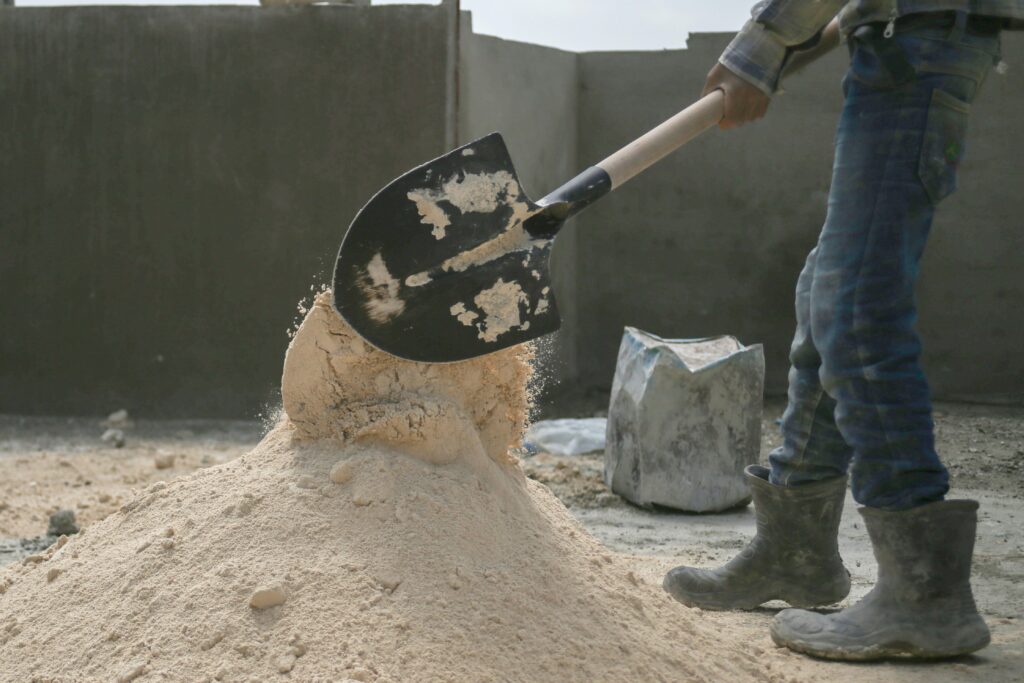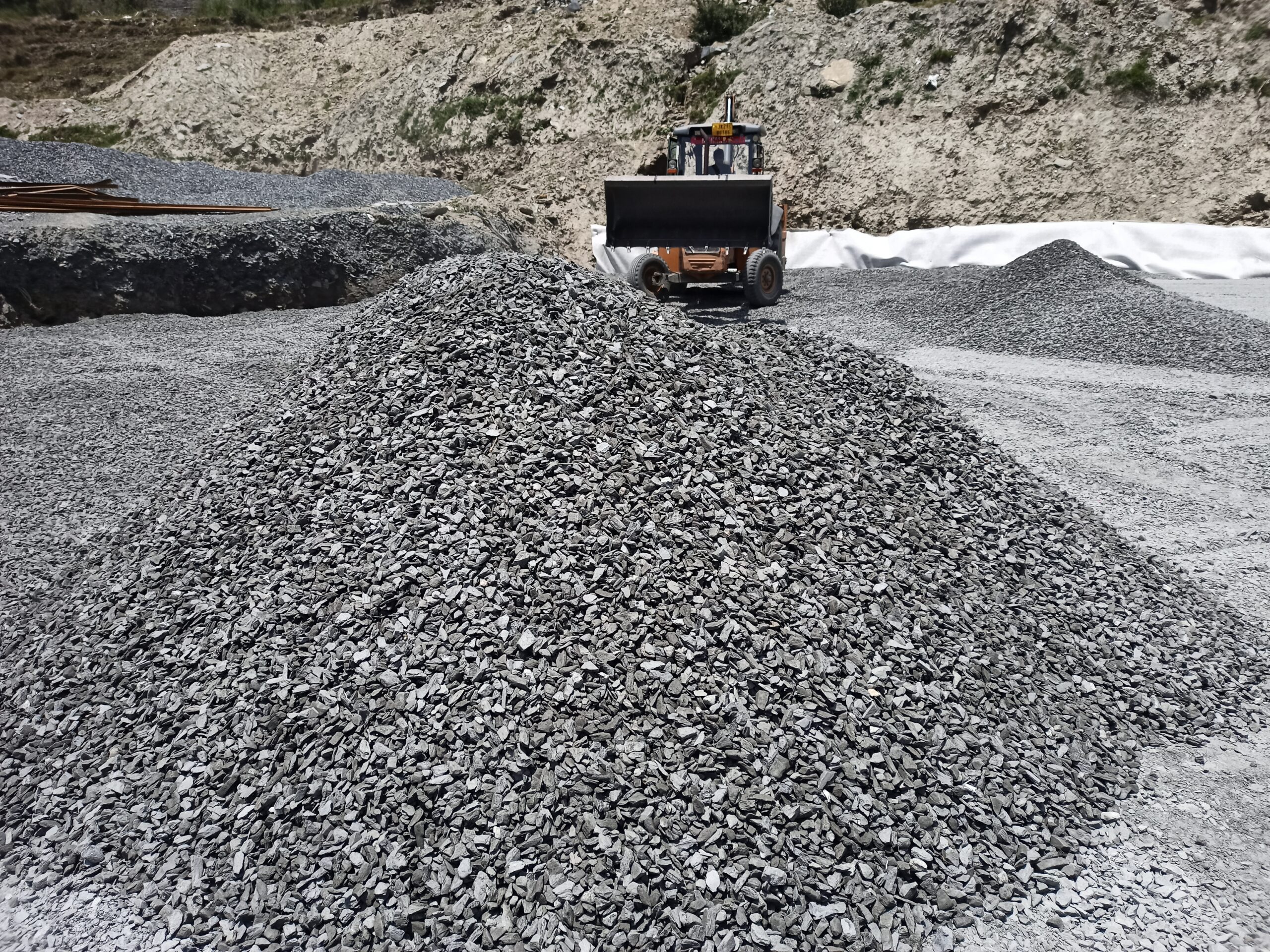The types of aggregates play an important role in the construction industry. Everywhere we are surrounded by structures that are made up of various types of aggregates. Here we explain how aggregates are classified according to their size and shape, such as coarse and fine aggregates.

What is an Aggregate?
Aggregate is an inert granular material mixed with cement to form concrete. Typically they are made up of sand, crushed stone, gravel, etc. The aggregate should be hard, strong, durable, and well-graded to form a compact and dense mass of concrete. The concrete is made up of 70% to 80% of the volume of aggregate.
Classification of Aggregates
The formation of the aggregate is derived from the naturally occurring rock either by crushing or blasting. Aggregates can be classified based on their shape and size, which affects their workability and the properties of the final concrete mix. The common classifications are:
On the basis of shape
Rounded Aggregates: These have smooth, rounded surfaces due to natural weathering. They provide good workability but very little strength due to poor interlocking. They are used very less due to weak bonds and low strength.
Graded Aggregates: The mix contains a variety of particle sizes, which leads to better compaction and reduces voids in the concrete. This gives slightly higher strength than rounded aggregates.
Angular Aggregates: They are obtained by crushing the rocks. With rough edges and surfaces, angular aggregates create stronger bonds within the concrete mix. They exhibit stronger binding strength than spherical aggregates due to their increased specific surface area. They are suitable for every concrete work where high strength and durability are required.
Flaky Aggregates: These have flat, elongated shapes and their thickness is much less as compared to their width, often resulting in a less workable mix and low durability.
Elongated Aggregates: These are those whose width and thickness are shorter as compared to their length. These particles usually have sharp edges, an angular or flaky shape, and a thin form.
On the basis of size
Aggregates are available in a variety of sizes. The specific size of aggregate is utilized for the concrete mix to obtain the desired strength. The particle size distribution of aggregate is known as the grading of aggregates. On the basis of size, these are classified into 2 types:
1. Fine aggregate
2. Coarse aggregate
Fine aggregate

The aggregates which pass through a 4.75mm sieve are known as fine aggregates. Generally, the river sand is considered a fine aggregate. But at a place where natural sand is not available economically, crushed stone may be used as fine aggregate. Fine sand, silt, and clay also come under this category. It is used as a filler material to fill the voids and gaps between the coarser particles in the concrete.

Here is the list of the particle sizes of the Fine aggregates:
| Fine aggregate | Particle Size |
| Coarse Sand | 2.0 – 0.5 mm |
| Medium Sand | 0.5 – 0.25 mm |
| Fine Sand | 0.25 – 0.06mm |
| Silt | 0.002 – 0.06 mm |
| Clay | < 0.002 mm |
Density of Fine Aggregate
Approximately 35% of the volume of the concrete consists of sand. In order to get the concrete of high quality, it should be carefully mixed with cement, fine and coarse aggregates, water, and necessary admixtures. This ensures that the concrete achieves the best possible quality and cost-effectiveness.
The natural sand used in construction has a building density of 1.71 kg/m3 and a specific gravity of about 2.65. It also has a fineness modulus value of approximately 5.24.
Manufactured sand is an alternative to natural sand, M-Sand was employed and had a bulk density of 1.75 kg/m3, a specific gravity of 2.73, and a fineness modulus of 4.66.
The densities of different forms of sand are as follows:
-
- Loose sand, which is dry, has a density of 1442 kg/m3.
-
- Dry sand itself has a density of 1602 kg/m3.
-
- Packed sand has a density of approximately 1682 kg/m3.
-
- Wet sand has a density of 1922 kg/m3, while packed wet sand has a density of 2082 kg/m3.
Coarse Aggregate

The particle whose size is greater than 4.75mm sieve is known as coarse aggregate. Gravel, cobbles, and boulders are the types of coarse aggregates. They are used depending on the nature of the work.
Coarse aggregate provides strength to the concrete. It Is widely used in the casting of slabs, beams, slabs, etc. with 20mm size.
Here is the list of the particle sizes of the Coarse aggregates:
| Coarse aggregate | Particle Size |
| Fine gravel | 4mm – 8mm |
| Medium gravel | 8mm – 16mm |
| Coarse gravel | 16mm – 80mm |
| Cobbles | 80mm – 300mm |
| Boulders | >300mm |
Bulk density of Coarse Aggregate
The bulk density of aggregate refers to the weight or mass per unit of volume.
Hence,
Bulk density = Weight (Mass) / volume
The standard density of aggregate which is used in concrete making is about 1200-1750 kg/m3.
The aggregates whose size is 20mm to 40mm have a density of 1200 – 1450 kg/m3.
Properties of Aggregates
Particle Shape and Texture: Aggregates can be angular, rounded, or irregular. Smooth, rounded aggregates generally provide better workability, while angular ones offer stronger mechanical interlocking in concrete.
Particle Size Distribution: This property refers to the range of sizes within an aggregate. A well-graded aggregate mix ensures better compatibility and reduces the voids in the concrete mix.
Specific Gravity: The ratio of the density of an aggregate particle to the density of water at a specific temperature. It helps in calculating the volume of concrete needed for a project.
Absorption and Porosity: These properties indicate how much water an aggregate can absorb and retain. Low absorption and porosity are preferable to prevent excessive water from affecting the concrete mix.
Strength and Durability: The mechanical properties of aggregates impact the overall strength and durability of the concrete. Strong and durable aggregates contribute to the longer life of the structures.
Uses of aggregate
-
- It is widely used in the production of concrete providing strength and increase in volume.
-
- It is used in railway tracks to transfer the rail loads through ballast to the subgrade.
-
- They are used in the filter galleries as filter media to provide passage to the water.
-
- It is used with bitumen for wearing courses in pavement construction.
-
- It is used in the backfilling of the retaining walls.
FAQs
How many types of aggregate are used in concrete?
Both fine and coarse aggregates are beneficial in achieving the desired properties of concrete. It is important to use them in the proper proportions to get better results from the mix.
What are the two types of aggregates?
Coarse and Fine aggregates are the two types of aggregate. They are further classified on the basis of their shape and sizes according to their use for construction purposes.
Can we use any type of aggregate for all construction projects?
The choice of aggregate depends on the specific project requirements. Factors such as load-bearing capacity, exposure to environmental conditions, and availability.
How the quality of aggregates can be ensured?
Quality aggregates meet industry standards for specific properties. Regular testing, proper storage, and buying from reliable suppliers ensure quality.


